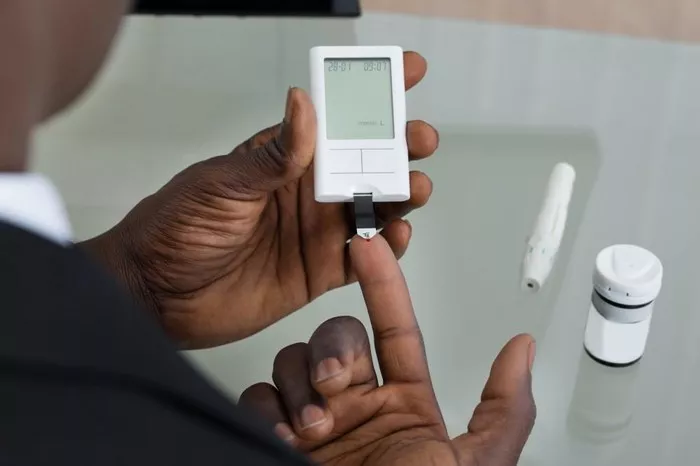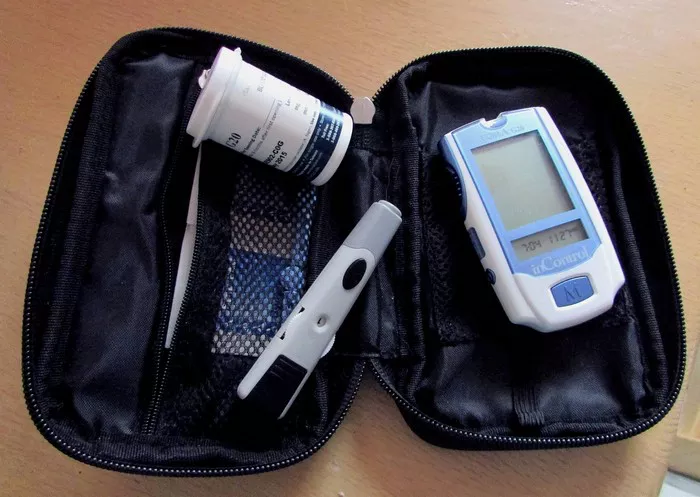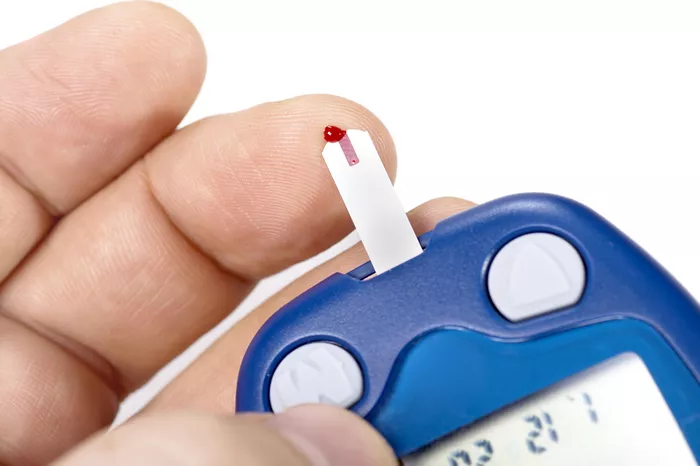Monitoring blood sugar levels is a crucial aspect of diabetes management. Blood glucose meters, commonly known as blood sugar machines, have revolutionized the way individuals with diabetes manage their condition. These devices provide quick and accurate measurements of blood glucose levels, allowing for timely interventions and better control over diabetes. In this comprehensive article, we will explore the intricacies of how blood sugar machines work, their components, the science behind their operation, and their role in diabetes management.
The Importance of Blood Glucose Monitoring
Diabetes is a chronic condition characterized by high blood glucose levels due to the body’s inability to produce or effectively use insulin. Monitoring blood glucose levels is essential for several reasons:
Glycemic Control: Regular monitoring helps individuals maintain blood glucose levels within the target range, reducing the risk of complications such as cardiovascular disease, neuropathy, retinopathy, and nephropathy.
Medication Adjustment: It aids healthcare providers in adjusting medications, including insulin doses, to achieve optimal glycemic control.
Diet and Exercise Management: Monitoring provides feedback on how diet and physical activity affect blood glucose levels, allowing for better lifestyle adjustments.
Preventing Hypoglycemia: It helps in identifying and preventing episodes of low blood sugar, which can be life-threatening if not promptly addressed.
Components of a Blood Sugar Machine
A typical blood glucose meter consists of several key components:
Lancing Device and Lancets: These are used to prick the skin and obtain a small blood sample. The lancing device is adjustable to control the depth of the puncture, and lancets are the small, sharp needles used in the device.
Test Strips: These strips contain chemicals that react with glucose in the blood sample. They are inserted into the meter, and a drop of blood is applied to the strip.
Meter: The main unit that houses the electronics and display. It reads the test strip and provides a glucose reading.
Display Screen: Shows the blood glucose level, usually in milligrams per deciliter (mg/dL) or millimoles per liter (mmol/L).
Memory and Data Management: Modern meters store past readings and can often connect to computers or mobile devices for data management and analysis.
The Science Behind Blood Glucose Measurement
Blood glucose meters typically use one of two primary methods for measuring blood glucose levels: electrochemical or photometric. Let’s delve into each method:
Electrochemical Method
Most modern blood glucose meters use the electrochemical method due to its accuracy and ease of use. This method involves the following steps:
Blood Application: A drop of blood is placed on the test strip. The strip contains an enzyme (usually glucose oxidase or glucose dehydrogenase) that reacts with the glucose in the blood.
Chemical Reaction: The enzyme catalyzes a reaction that produces an electrical current. In the case of glucose oxidase, the reaction involves glucose and oxygen, producing gluconic acid and hydrogen peroxide. The hydrogen peroxide then reacts at the electrode to produce a measurable current.
Current Measurement: The meter measures the electrical current generated by the reaction. The strength of the current is proportional to the concentration of glucose in the blood sample.
Conversion to Glucose Level: The meter’s internal algorithms convert the electrical current measurement into a blood glucose level, which is displayed on the screen.
Photometric Method
While less common today, some blood glucose meters use the photometric method. This method involves the following steps:
Blood Application: A drop of blood is placed on the test strip, which contains chemicals that change color in the presence of glucose.
Color Reaction: The glucose in the blood reacts with the chemicals on the strip, causing a color change.
Light Reflection Measurement: The meter shines a light on the test strip and measures the amount of light reflected back. The intensity of the reflected light changes based on the color produced by the glucose reaction.
Conversion to Glucose Level: The meter converts the reflected light measurement into a blood glucose level, which is displayed on the screen.
Calibration and Accuracy
Ensuring accurate blood glucose measurements is vital for effective diabetes management. Several factors contribute to the accuracy of a blood glucose meter:
Calibration: Blood glucose meters need to be calibrated to ensure accurate readings. Calibration involves adjusting the meter to match a known glucose concentration. Some meters require manual calibration using a control solution, while others are factory-calibrated and do not need user intervention.
Quality of Test Strips: The accuracy of the meter heavily depends on the quality and condition of the test strips. Strips should be stored properly and used before their expiration date.
Environmental Factors: Temperature, humidity, and altitude can affect meter performance. Most meters are designed to operate within specific environmental ranges.
User Technique: Proper technique in obtaining and applying the blood sample is crucial. Insufficient blood sample size or improper application can lead to inaccurate readings.
Advances in Blood Glucose Monitoring
Over the years, significant advancements have been made in blood glucose monitoring technology. These innovations aim to improve accuracy, convenience, and overall user experience. Some notable advancements include:
Continuous Glucose Monitoring (CGM): CGM systems provide real-time glucose readings throughout the day and night, using a sensor inserted under the skin. These systems offer a comprehensive view of glucose trends and patterns, helping users make informed decisions about their diabetes management.
Flash Glucose Monitoring: Similar to CGM, flash glucose monitoring systems use a sensor that measures glucose levels continuously. However, users must scan the sensor with a reader or smartphone to obtain a glucose reading. This method provides convenience and reduces the need for frequent fingerstick tests.
Integrated Insulin Pumps: Some advanced blood glucose meters are integrated with insulin pumps, providing automated insulin delivery based on glucose readings. These systems, known as closed-loop or artificial pancreas systems, offer a more streamlined and effective approach to diabetes management.
Smartphone Connectivity: Modern blood glucose meters often connect to smartphones via Bluetooth, allowing users to track their readings, set reminders, and share data with healthcare providers through dedicated apps.
The Role of Blood Glucose Monitoring in Diabetes Management
Effective diabetes management requires a multifaceted approach that includes blood glucose monitoring, medication, diet, and exercise. Blood glucose meters play a pivotal role in this process by providing valuable insights into how different factors affect blood glucose levels. Here are some key ways in which blood glucose monitoring supports diabetes management:
Tracking Trends and Patterns: Regular monitoring helps individuals identify trends and patterns in their blood glucose levels. This information can reveal how different foods, activities, stress, and medications impact glucose control.
Making Informed Decisions: By understanding their glucose patterns, individuals can make informed decisions about their diet, exercise, and medication. For example, if a person notices a spike in blood glucose after consuming certain foods, they can adjust their diet accordingly.
Preventing Complications: Consistently high or low blood glucose levels can lead to severe complications. Regular monitoring allows for timely interventions, such as adjusting insulin doses or seeking medical advice, to prevent complications.
Enhancing Communication with Healthcare Providers: Blood glucose data can be shared with healthcare providers, enabling more personalized and effective treatment plans. Providers can analyze the data to make necessary adjustments to medications and provide tailored recommendations.
Practical Tips for Using a Blood Glucose Meter
To ensure accurate and reliable blood glucose measurements, users should follow these practical tips:
Wash Hands Thoroughly: Before testing, wash hands with soap and water to remove any substances that could affect the reading. Dry hands completely to avoid diluting the blood sample.
Use the Correct Blood Sample Size: Follow the meter’s instructions for the required blood sample size. Insufficient blood can lead to inaccurate readings.
Proper Storage of Test Strips: Store test strips in a cool, dry place, and keep the container tightly closed. Avoid exposing strips to extreme temperatures or humidity.
Regular Meter Maintenance: Keep the meter clean and perform regular maintenance as recommended by the manufacturer. Check for any signs of damage or malfunction.
Follow Testing Schedule: Test blood glucose levels at the recommended times, such as before and after meals, before bedtime, and as advised by a healthcare provider.
Keep a Logbook: Maintain a logbook or use digital apps to track blood glucose readings, along with notes on diet, exercise, and medication. This helps in identifying patterns and making necessary adjustments.
Future Directions in Blood Glucose Monitoring
The field of blood glucose monitoring continues to evolve with ongoing research and technological advancements. Future directions in blood glucose monitoring aim to further improve accuracy, convenience, and integration with other diabetes management tools. Some potential developments include:
Non-Invasive Monitoring: Researchers are exploring non-invasive methods for blood glucose monitoring, such as optical sensors, biofluids (e.g., saliva, sweat), and wearable devices. These methods aim to reduce the need for fingerstick tests and improve user comfort.
Advanced Algorithms and Artificial Intelligence: The integration of advanced algorithms and artificial intelligence (AI) into blood glucose monitoring systems can enhance data analysis and provide personalized insights. AI can help predict glucose trends, suggest insulin dosages, and optimize treatment plans.
Closed-Loop Systems: The development of closed-loop insulin delivery systems, also known as artificial pancreas systems, continues to advance. These systems combine continuous glucose monitoring with automated insulin delivery, offering a more seamless and effective approach to diabetes management.
Improved Sensor Technology: Advances in sensor technology aim to enhance the accuracy and longevity of continuous glucose monitoring systems. Improved sensors can provide more reliable readings and reduce the frequency of sensor replacements.
Integration with Digital Health Platforms: The integration of blood glucose monitoring data with digital health platforms and electronic health records (EHRs) can facilitate better communication between patients and healthcare providers. This integration can lead to more comprehensive and coordinated diabetes care.
Conclusion
Blood glucose meters have transformed the way individuals with diabetes manage their condition, providing essential insights into blood glucose levels and enabling timely interventions. These devices, based on electrochemical and photometric methods, offer accurate and reliable measurements that are crucial for maintaining glycemic control, preventing complications, and enhancing overall quality of life.
As technology continues to advance, blood glucose monitoring will become even more integrated, accurate, and user-friendly. Innovations such as continuous glucose monitoring, smartphone connectivity, and closed-loop systems are already making significant strides in diabetes management. The future holds promise for even more groundbreaking developments, including non-invasive monitoring and AI-driven insights.
Ultimately, effective diabetes management requires a comprehensive approach that includes regular blood glucose monitoring, medication, diet, and exercise. By leveraging the capabilities of blood glucose meters and staying informed about the latest advancements, individuals with diabetes can achieve better control over their condition and lead healthier, more fulfilling lives.
Related topics:

























